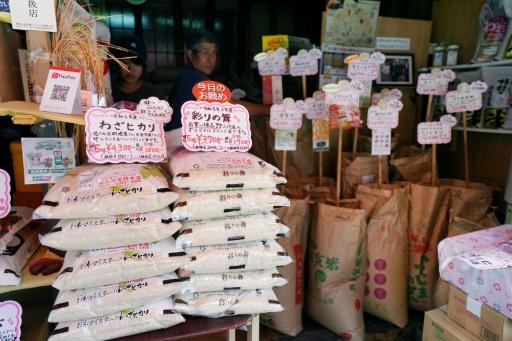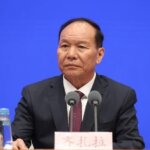Japan’s Rice Crisis: A Staple Food Under Pressure
Rice, the cornerstone of Japanese cuisine and culture, has become the center of a national crisis in 2025. In July, rice prices soared by 90.7 percent compared to the previous year, according to official data. While the pace of increase has slowed slightly from earlier months, the impact on households, businesses, and the political landscape remains profound. The crisis has exposed deep vulnerabilities in Japan’s food system and sparked urgent debates about economic policy, food security, and the future of Japanese agriculture.
What Triggered the Rice Price Explosion?
The roots of Japan’s rice price surge are complex, involving a mix of natural disasters, policy decisions, market dynamics, and global events. Several key factors converged to create the perfect storm:
- Extreme Weather: A record-breaking heatwave in the summer of 2023 devastated rice crops, leading to lower yields and reduced quality. This poor harvest set the stage for shortages in 2024 and 2025.
- Panic Buying and Earthquake Fears: In August 2024, a government warning about a potential megaquake triggered widespread panic buying and stockpiling of rice, especially in regions like Kyushu and along the Pacific coast. The timing coincided with the Obon holiday, amplifying demand.
- Tourism and Demographic Shifts: As Japan reopened to international tourism after the COVID-19 pandemic, a surge in visitors—many from rice-eating cultures—further increased demand. In 2024 alone, the foreign population grew by a record 342,000, adding pressure to rice supplies.
- Speculation and Market Rigidities: The launch of a rice index futures market in late summer 2024 signaled expectations of higher prices, fueling speculation among traders and consumers. Meanwhile, rigidities in the rice production system and government policies limited the market’s ability to respond flexibly to changing conditions.
- Global Supply Chain Disruptions: The ongoing war in Ukraine and global wheat shortages pushed more Japanese consumers and restaurants to rely on rice, further straining supplies.
These factors combined to create a situation where even a small shift in supply or demand could cause dramatic price swings. As one analysis noted, a change of just 200,000 tons in rice supply—about 2.7 percent of annual production—can disrupt the entire market.
Government Policies: Help or Hindrance?
Japan’s government has long played a central role in the rice market, aiming to protect domestic farmers and ensure food security. However, critics argue that decades-old policies have contributed to the current crisis. For years, the government encouraged farmers to grow crops other than rice, subsidized rice for livestock feed, and maintained high tariffs on imported rice to shield local producers from global competition.
These measures, while supporting rural communities and preserving traditional farming, have also kept rice production artificially low and prices high. The average age of Japanese rice farmers is now nearly 70, raising concerns about the sustainability of domestic production. As Kay Shimizu, a political economist, explained in a recent interview:
“The Japanese government has historically limited rice production to protect elderly, part-time rice farmers, who are a key voting base for the ruling Liberal Democratic Party. This artificial restriction keeps supply low and prices high.”
When the crisis hit, the government responded by releasing rice from emergency stockpiles and appointing a new farm minister. In January 2025, new rules made it easier to release stockpiled rice during emergencies, and by February, 210,000 tonnes had been put on the market. However, these interventions have had limited impact on retail prices, as most rice had already been bought and sold at elevated prices by the time the releases occurred.
Moreover, the government’s approach to price stabilization has been criticized for lacking clear metrics and for being reactive rather than proactive. The release of stockpiled rice, originally intended for disaster relief, is now being used as a de facto price control measure—a strategy with uncertain long-term effects.
How Are Households and Businesses Coping?
The surge in rice prices has hit Japanese consumers hard. Grocery stores have begun rationing rice, limiting customers to one bag each. Many families, especially those on fixed incomes, are struggling to afford a food that is considered a daily necessity. Restaurants and food service companies, facing higher costs, are increasingly turning to cheaper imported rice or adjusting their menus to use less rice.
Popular brands like Koshihikari now sell for around 5,000 yen (about $35) for a five-kilogram bag, while other varieties fetch 4,200 yen (about $29). The government’s stated goal is to bring prices down to about 3,000 yen (around $20) for the same amount, but this remains elusive.
The crisis has also exposed inequalities in the food system. While major rice wholesalers have managed to maintain their inventories and pass on higher costs to consumers, smaller retailers and individual buyers have struggled to secure supplies. Some analysts warn that continued high prices could lead to the emergence of black markets or unfair access, as seen in other countries during food crises.
Political Fallout: A Test for Leadership
The rice crisis has become a major political issue, threatening the stability of Prime Minister Shigeru Ishiba’s government. Voter anger over rising food prices contributed to the ruling coalition’s loss of its majority in both chambers of parliament. A recent poll showed Ishiba’s cabinet approval rating plummeting to 27.4 percent.
The resignation of Agriculture Minister Taku Eto, following controversial remarks about receiving rice as gifts, further highlighted the political stakes. His successor, Koizumi Shinjiro, has pledged to reform agricultural policy and challenge the powerful farm lobby, but faces an uphill battle.
“The consequences of expensive staple foods include public anxiety, political pressure, and economic strain as more income is spent on food,”
wrote John Wright in The Diplomat, emphasizing the broader implications for Japan’s social fabric and national security.
Rice, Inflation, and the Bank of Japan
The rice price surge has contributed to broader inflationary pressures in Japan. In July, core inflation (excluding fresh food) stood at 3.1 percent, well above the Bank of Japan’s (BOJ) 2 percent target. Food inflation, excluding fresh products, accelerated to 8.3 percent, with rice playing a significant role.
The BOJ has faced mounting pressure to raise interest rates to curb inflation. While the central bank last hiked rates in January, it has been cautious about further tightening, viewing the current inflation as driven by temporary factors like rice prices and global energy shocks. However, with inflation remaining stubbornly high and the economy showing resilience, many economists expect another rate hike as early as October.
International pressure has also played a role. U.S. Treasury Secretary Scott Bessent publicly urged the BOJ to act, arguing that Japan was “behind the curve” on inflation. The BOJ’s own statements emphasize the need for flexibility and close monitoring of risks, including global economic developments and domestic demand fluctuations.
Trade Tensions and the Role of Imports
Japan’s rice market is largely insulated from international competition due to high tariffs on foreign rice. This protectionist stance is rooted in a desire to preserve domestic agriculture and food self-sufficiency, but it also limits the ability to respond to shortages through imports.
Recent trade negotiations with the United States have brought some relief. A new deal reduced threatened tariffs on Japanese cars and other goods, and U.S. President Donald Trump has pushed for Japan to import more American rice. Some American rice, such as Calrose, is now being sold in Japanese supermarkets, but the volume remains small compared to domestic demand.
Importing more rice could help ease the shortage, but it remains politically sensitive. Many Japanese consumers prefer domestic rice for its taste and cultural significance, and farmers fear that increased imports would threaten their livelihoods.
Structural Issues: Flawed Policies and Market Rigidities
Beyond immediate triggers, the rice crisis has exposed deeper structural problems in Japan’s agricultural system. For decades, the government has managed rice production through a combination of subsidies, quotas, and incentives to grow alternative crops. While these policies aimed to prevent overproduction and support rural communities, they have also created inflexibilities that make the market vulnerable to shocks.
One striking example is the use of rice for livestock feed. About one-tenth of Japan’s rice output is sold as feed at lower prices, even though a quarter of this feed rice is the same variety as eating rice. If this rice were redirected to human consumption, supply would exceed demand, highlighting the artificial nature of the shortage.
The abolition of the gentan program (a government-led rice production cartel) in 2004 and subsequent subsidies for feed rice have further complicated the market. The recent opening of a rice index futures market has introduced new opportunities for speculation, which some analysts believe may destabilize prices if not carefully regulated.
Ultimately, the crisis is less about a true shortage of rice and more about the inability of the system to adapt quickly to changing conditions. As the East Asia Forum observed:
“The real issue is not a shortage of rice production, but inflexible production systems and missing market mechanisms that worsened price spikes.”
The Future of Japanese Rice: Turning Point or Missed Opportunity?
Looking ahead, Japan faces difficult choices about the future of its rice industry. The government has begun to allow farmers more flexibility in choosing where to sell their rice, and some cooperatives are proposing multiyear contracts at stable prices. However, the balance of power between traditional cooperatives (like the Japan Agricultural Cooperatives, or JA) and private wholesalers is shifting, with potential implications for farmers’ bargaining power and the structure of the market.
If competition among buyers intensifies, prices could rise further. If not, and if additional stockpiled rice is released, prices may stabilize or even fall. The decisions made by farmers, policymakers, and market participants in 2025 could mark a significant turning point in the history of rice in Japan.
Food Security and National Identity
Rice is more than just a food in Japan—it is a symbol of national identity, cultural heritage, and social cohesion. The current crisis has underscored the importance of food security as a pillar of state security. As The Diplomat noted, Japan’s geography limits its agricultural output, making it dependent on imports and vulnerable to global shocks. Urbanization and a declining rural population further threaten the sustainability of domestic rice production.
Ensuring affordable and reliable access to rice is not just an economic issue, but a matter of national security and social stability. Ignoring the connection between staple food supply, culture, and security could have serious consequences for Japan’s future.
In Summary
- Rice prices in Japan surged by over 90 percent year-on-year in July 2025, straining households and businesses.
- The crisis was triggered by a combination of extreme weather, panic buying, increased tourism, market speculation, and rigid government policies.
- Government interventions, including releasing stockpiled rice and policy reforms, have had limited success in stabilizing prices.
- The crisis has fueled inflation, political instability, and debates about food security and national identity.
- Structural issues in Japan’s rice market—such as production quotas, subsidies, and protectionism—have made the system vulnerable to shocks.
- Future policy choices and market reforms will determine whether Japan can restore stability and affordability to its most cherished staple food.




